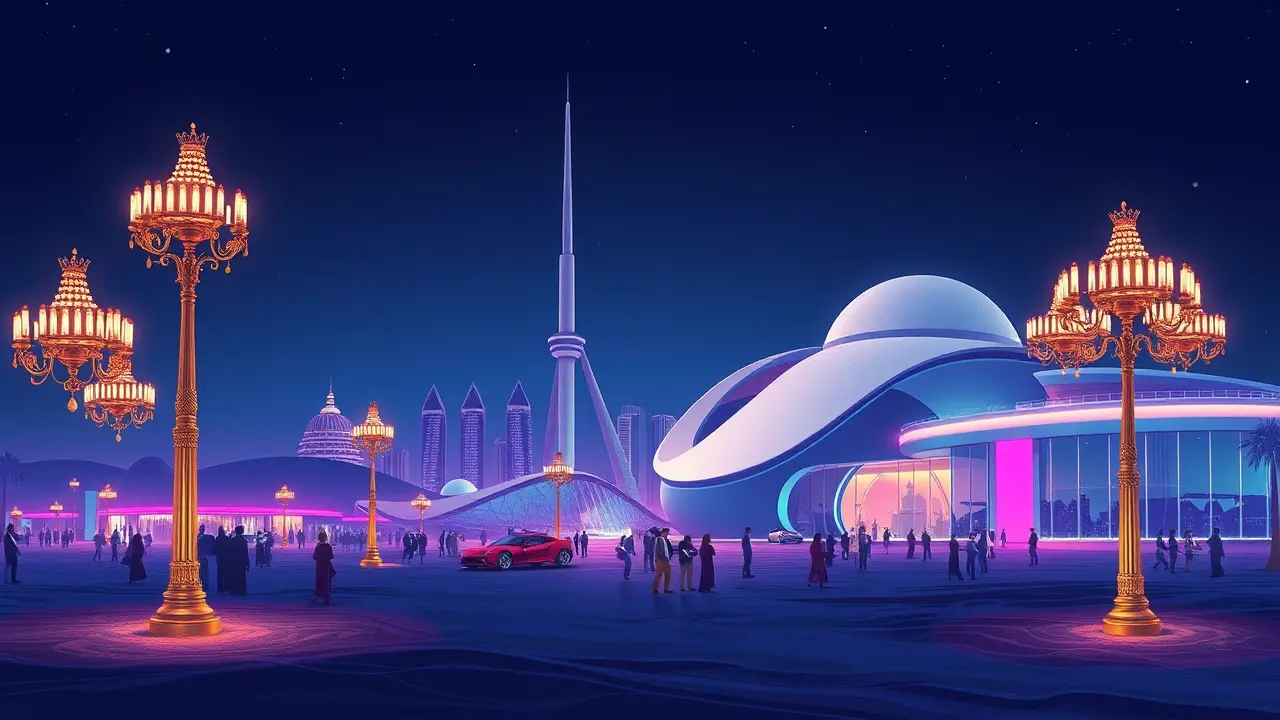
Entertainmenttheatre & artsArt Exhibitions
Qatar Launches New Quadrennial and Hosts Art Basel.
LI
Lily Harper
12 hours ago7 min read
Darling, grab your opera glasses because the art world's glitterati are flocking to a new epicenter of glamour, and it's not New York or London—it's the sun-drenched, ambition-fueled shores of Qatar. The Gulf state, already a heavyweight collector with a penchant for snatching up masterpieces by the likes of Cattelan and Rothko, is now launching its own quadrennial, a move that’s less an invitation and more a declaration of cultural sovereignty.This isn't just another art fair; it's a four-yearly spectacle poised to rival Venice's hallowed Biennale, and with Art Basel planting its flag in the Doha sand, Qatar is staging a coup that’s part red-carpet gala, part geopolitical chess match. Imagine the scene: vast, air-conditioned pavilions rising from the desert like mirages, curated by the industry's most elusive tastemakers, while billionaires and A-list curators mingle under chandeliers that probably cost more than a small island.The subtext? Qatar isn't just buying art; it's buying influence, leveraging its petrodollar wealth to architect a legacy that transcends oil, with every installation and opening night serving as a strategic tile in a mosaic of soft power. But behind the Insta-perfect veneer of Jeff Koons sculptures against futuristic skylines, there's a simmering debate: can a nation without a deep-rooted gallery ecosystem sustain a market beyond the flash of a checkbook? Art Basel’s arrival brings global credibility, yes, but it also raises the stakes, demanding local galleries, homegrown talent, and a collector base that doesn’t just acquisition art but lives and breathes it—something that can’t be manufactured overnight, no matter the budget.Look at the Venice Biennale pavilion, a perennial darling that’s showcased Qatari-backed projects with theatrical flair, yet critics whisper about the 'parachute patronage' model, where art is imported rather than cultivated. The quadrennial could be the game-changer, a platform to nurture regional voices like the provocative painter Hayv Kahraman or the digital visionary Sophia Al-Maria, blending Bedouin motifs with contemporary critique, but it’ll need more than star-studded guest lists—it’ll require a grassroots revolution in arts education and gallery infrastructure.And let’s talk about the elephant in the room: the West’s uneasy fascination with Qatar’s art ascent, where applause for bold programming is often tempered by side-eye over labor practices and political freedoms, a tension that simmers beneath every champagne toast. Yet, for all the skepticism, there’s a thrilling narrative here: a tiny nation rewriting the cultural map, challenging Eurocentric gatekeepers, and proving that the next great art capital might just emerge from the dunes. As the first quadrennial preparations buzz with rumors of blockchain-integrated exhibits and AI-driven installations, one thing’s clear—Qatar isn’t playing for participation trophies; it’s courting a legacy, and the world is watching, front-row seats only.
#Art Basel
#Qatar
#art market
#international art
#quadrennial
#featured
Stay Informed. Act Smarter.
Get weekly highlights, major headlines, and expert insights — then put your knowledge to work in our live prediction markets.
© 2025 Outpoll Service LTD. All rights reserved.